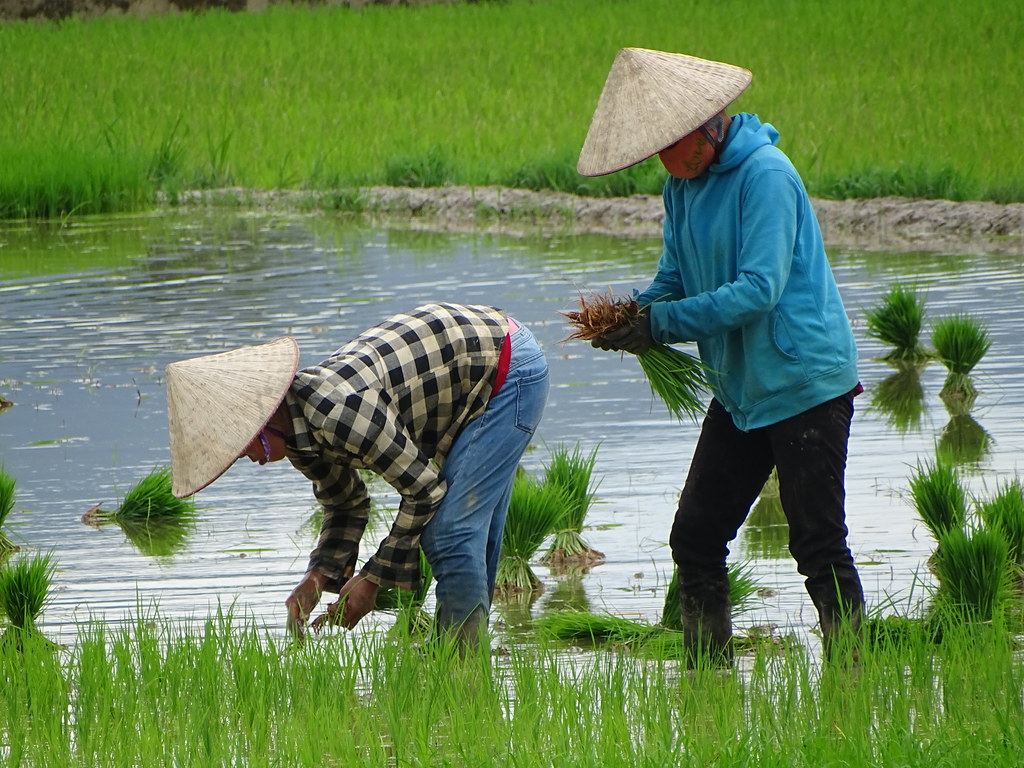The “Sarus Crane-Friendly Rice” project is implemented in cooperation with National Library of Cambodia and BirdLife International with the support of the International Union for Conservation of Nature (IUCN)- Netherlands.
“This project not only benefits local communities but also highlights the importance of sarus cranes and other wetland birds present in the fields. At present, the environment ministry and partner organisations have been implementing a pilot project to produce sarus crane-friendly rice with the participation of local farmers around the Anlung Pring protected landscape,” according to Neth Pheaktra, a spokesman of the Ministry.
The rice used in the project is a local variety that the cranes prefer. Farmers must follow the conditions of the project such as not hunting wildlife, using traps or chemicals, encroaching on protected areas, and the rice must be organic.
Pheaktra said about 50 percent of harvested rice was sold at the market while the remaining half was left in the rice fields as food for the cranes.
“The protection and conservation of sarus cranes will only be successful if the livelihoods of local communities are taken into account and all stakeholders are involved,” he said. The ministry will continue to work with relevant parties to find markets for sarus cranes-friendly rice to make this project succeed,” he said.
Bou Vorsak, Cambodia programme manager at BirdLife International and CEO of its partner NatureLife Cambodia, also said the pilot project will ensure protected areas continue to play an important role in preventing cranes from becoming extinct.
“We need to make the fields around this area a safe haven and a place to feed the cranes,” he said.
Vorsak said the organisation has so far signed a 10-year lease for 17ha of land for 16 families to grow rice for the cranes and provide additional income.
According to Vorsak, farmers joining the project will increase in coming years.
Marc Hoogeslag, the International Union for Conservation of Nature’s (IUCN) Netherlands programme coordinator, also said that reducing pressure on natural resources requires striking a balance between human and animal needs.
He said the rice project in Anlung Pring is a good example bringing benefits to farmers and encouraging them to participate in protecting endangered wild birds.
Suy Thea, director of the Kampot provincial Department of Environment, supported the conservation of biodiversity in the Anlung Pring protected landscape protection area.
He said this protected area has park rangers on duty who cooperate with local authorities and partner organisations to protect and preserve endangered animals and educate people about the law and the value of rare birds, especially sarus cranes.
The sarus crane is one of the most endangered birds in Southeast Asia and is on the IUCN Red List.
According to the 2020 sarus crane census, there were only about 194 live sarus cranes.
Sarus cranes have declined in recent years due to high mortality rates and low breeding rates, and other threats such as a loss of habitat and breeding grounds, pollution, declining food sources, hydrological changes, infectious diseases and climate change.
According to phnompenhpost.com












